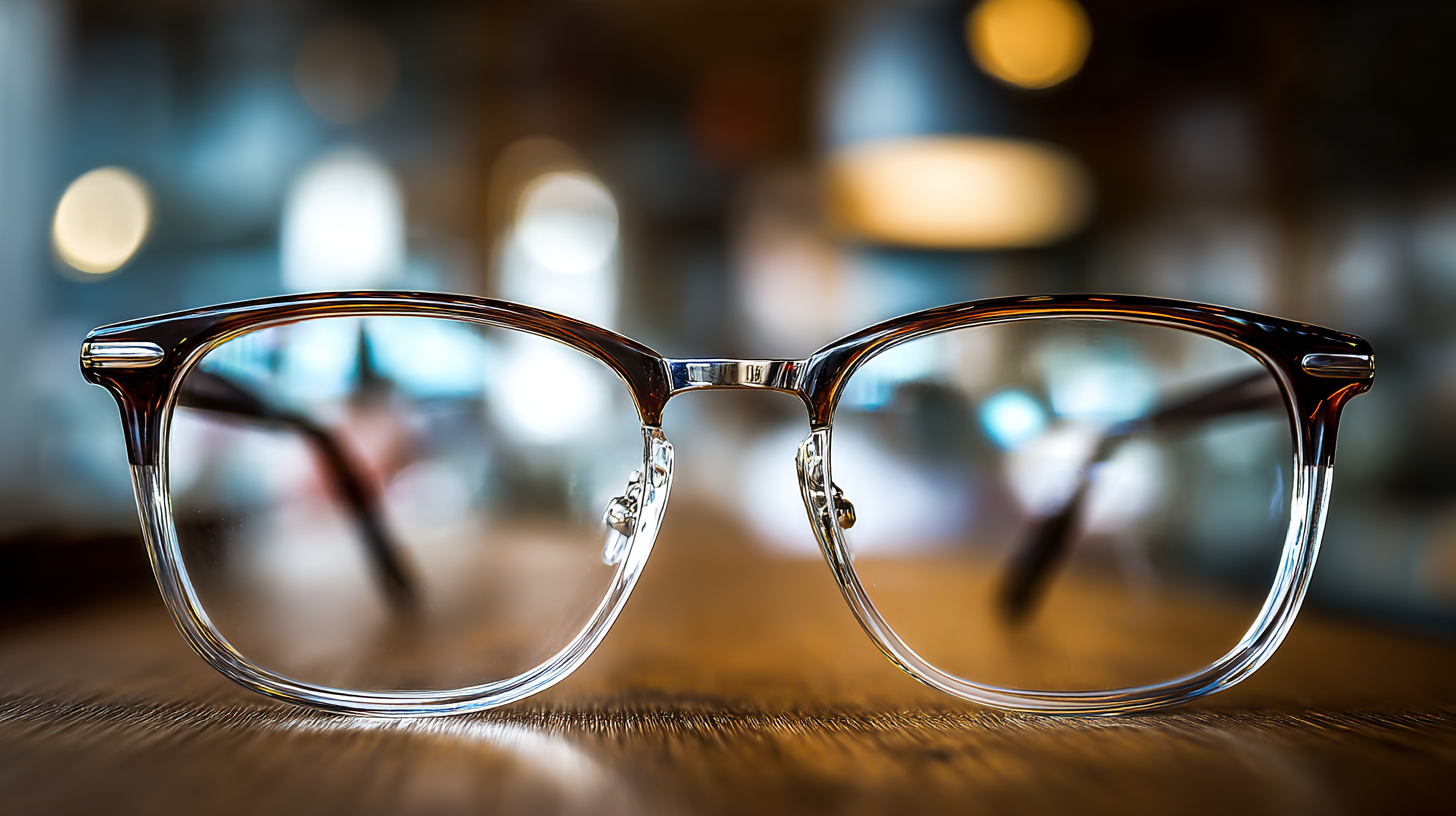In the rapidly evolving eyewear industry, the demand for High Index Lenses has surged significantly, reflecting a growing preference for lightweight and thinner lens options. According to a recent report by Grand View Research, the global optical lenses market is expected to reach USD 46.5 billion by 2025, with a notable increase in the adoption of high index materials due to their superior optical properties and aesthetic appeal. As consumers become more discerning about both functionality and style, manufacturers are compelled to prioritize these advancements in their procurement strategies. Choosing the best High Index Lenses is crucial for businesses aiming to meet this burgeoning demand while maintaining quality and performance.

This blog presents five essential tips that will aid global procurement professionals in navigating their options to ensure they select the most effective and high-quality lenses to serve a diverse market.
When selecting high index lenses for global procurement, certain key factors must be prioritized to ensure optimal quality and performance. One of the primary considerations is the refractive index itself; lenses typically fall within the range of 1.56 to 1.74. According to the Vision Council's 2022 report, lenses with higher indices not only provide thinner profiles but also enhance visual clarity, particularly beneficial for individuals with higher prescriptions. This is crucial for any procurement strategy aimed at meeting diverse consumer needs.

Another essential factor is the lens material, which impacts not only the weight and thickness of the lenses but also their durability and performance under various conditions. Materials such as polycarbonate and Trivex are widely regarded for their impact resistance and UV protection, with industry studies showing a shift towards polycarbonate lenses, capturing over 40% of the market share in recent years. Furthermore, it's vital to consider coatings and treatments that can enhance the lenses' longevity and functionality. Anti-reflective and scratch-resistant coatings are increasingly becoming standard, demonstrating a significant improvement in user satisfaction rates according to recent surveys.
Prioritizing these factors will enable companies to make informed decisions in selecting high index lenses that meet global standards.
When it comes to selecting the best high index lenses, a data-driven approach can significantly enhance decision-making and optimize purchasing strategies for global procurement. Understanding the advantages of high index lenses is key; they offer thinner, lighter designs without compromising optical clarity, making them ideal for those seeking comfort and style in eyewear.

Tip 1: Conduct a comprehensive assessment of your needs by analyzing usage patterns and individual preferences. Data on patient demographics and lifestyle choices can guide you to the right lens options. This tailored approach ensures better satisfaction and reduces the risk of returns.
Tip 2: Leverage performance data on various lens materials available in the market. High index lenses can vary in quality and features, so reviewing customer feedback and professional recommendations can help identify the most effective solutions tailored to specific markets.
Utilizing a data-driven mindset not only enhances the procurement process but also aligns the product selection with the evolving needs of consumers, ensuring the best outcomes for both providers and customers.
When selecting high index lenses for global procurement, evaluating the material index is crucial as it directly impacts both the comfort and thinness of the lenses. High index lenses are designed to bend light more efficiently than traditional lenses, which means that they can be made thinner without compromising visual acuity. This aspect is particularly beneficial for individuals with strong prescriptions, as thinner lenses can significantly reduce the overall weight and bulk, resulting in a more comfortable wearing experience.
Moreover, the comfort of high index lenses is not solely determined by their thickness; it also involves factors like weight distribution and the quality of materials used. Lenses with a higher index often allow for lighter frames, which can enhance comfort during long wear periods. Additionally, some materials come with advanced coatings that improve scratch resistance and reduce glare, further adding to user comfort. Thus, careful consideration of the material index can lead to the best choices in terms of both aesthetics and wearability, ensuring that the final products meet consumer demands effectively.
| Material Index | Lens Thickness (mm) | Weight (g) | Comfort Level (1-10) | UV Protection (%) |
|---|---|---|---|---|
| 1.61 | 3.0 | 15 | 8 | 99 |
| 1.67 | 2.5 | 13 | 9 | 98 |
| 1.74 | 2.0 | 12 | 10 | 97 |
| 1.80 | 1.8 | 11 | 9 | 95 |
| 1.90 | 1.5 | 10 | 8 | 93 |
When selecting high index lenses for global procurement, conducting a thorough cost-benefit analysis is crucial in balancing quality with pricing. According to a report by Grand View Research, the global optical lens market is projected to reach $26.4 billion by 2025, indicating a robust demand for high-quality lenses. However, with increased competition among manufacturers, understanding the nuances of pricing versus performance is essential for making informed decisions.
High index lenses, often made from advanced materials like polycarbonate and Trivex, provide superior optics while allowing for thinner designs. A study published in the Journal of Optical Materials found that high index lenses can be over 50% lighter than traditional plastic lenses for the same prescription strength. While the initial investment in high index lenses may be higher—often ranging from 20% to 40% more than standard lenses—many professionals argue that the long-term benefits, including increased patient satisfaction and fewer complaints about lens thickness and weight, justify the higher costs. Properly balancing these factors can significantly enhance both the quality of service and profitability for businesses involved in global lens procurement.
This chart provides a cost-benefit analysis of high index lenses based on five essential factors: Quality Rating, Price Per Pair, Durability, Weight, and UV Protection. The scores reflect the balance between quality and pricing, essential for making informed procurement decisions.
The landscape of high index lens production is rapidly evolving, driven by shifting consumer preferences and market trends. As consumers become increasingly aware of the benefits of high index lenses, such as their lightweight design and superior aesthetic features, manufacturers are responding by enhancing production techniques and materials. The demand for thinner and lighter lenses, particularly among fashion-conscious individuals and those with stronger prescriptions, is reshaping the way these products are sourced and produced.
Additionally, sustainability is becoming a pivotal aspect of consumer choice, prompting manufacturers to adopt eco-friendly practices in lens production. As shoppers lean towards brands that prioritize environmental responsibility, the use of sustainable materials and manufacturing processes is no longer a mere trend but a necessity. This shift not only influences sourcing strategies but also encourages innovation in product offerings, ensuring that high index lenses remain relevant and appealing in a competitive market.
As a result, stakeholders in the global procurement process must stay attuned to these preferences to effectively meet consumer demands and position themselves favorably within the industry.

